Do you remember precisely where you were when you heard about Diana’s death? The answer may be embarrassing. Twenty years on, it seems rather shocking that the demise of a rackety, foreign princess in a Paris underpass may colonise the same memory shelf as the assassination of President John F Kennedy or 9/11.
Hustled down a service lift in the Ritz Hotel with her boyfriend, Dodi al-Fayed, and out the rear door in a relentless cat-and-mouse game with the paparazzi, Diana's last careening, midnight race across Paris in a Mercedes 600, chauffeured by Ritz employee Henri Paul – who was three times over the French alcohol limit – ended fairly predictably: in the Pont de l'Alma tunnel, with the loss of three lives, and as many as 15 photographers swarming around the car, jostling for angles on the dead and dying.
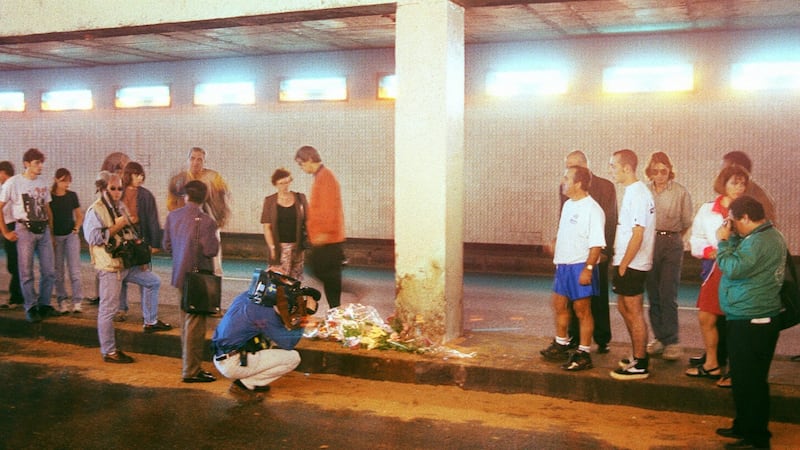
Far less predictable was what followed: the first great, global grief-a-thon for a glamour icon of the multimedia age; the virtual canonisation of a giddy, manipulative, 36-year-old gym bunny with a sad back story; national collapse of British stiff upper lip; mountains of rotting cellophane-wrapped flowers; a (short-lived) people’s revolution and temporary royal surrender; a universal savaging of the intrusive tabloid press, also short-lived since their millions of readers largely overlapped with the short-term revolutionaries. Plus enough conspiracy theories to rival the Dallas grassy knoll.
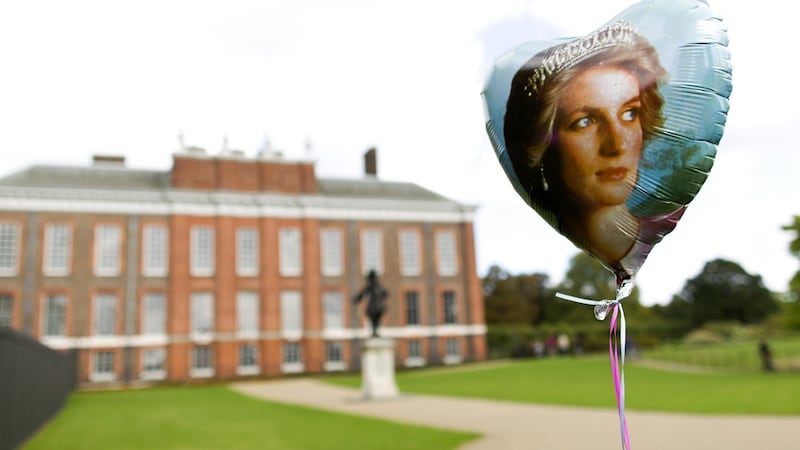
The myth-making began immediately, amply puffed by al-Fayed PR money. Though it was spun as the romance of the century, Dodi – invariably the "42-year-old playboy heir to the Harrods department store fortune" – and Diana had been dating for a couple of months at most. They met when his billionaire father, Mohamed al-Fayed, cannily invited the divorced princess and her sons to spend time on the family yacht and had been together for no more than a handful of days. Yet there were breathless tales of a marriage proposal and a pregnancy.
A couple of weeks before the crash, support for the British royals had plummeted below 50 per cent, according to a Sun poll, a drop some attributed to unceasing coverage of the hot, new liaison. Tearful Californian press conferences by a scorned model flashing a massive engagement ring; gifts of diamond necklaces and Bulgari earrings for Diana; helicopter trips by the pair to Madame Vasso, a soothsayer in Derbyshire. That second sailing interlude was her third holiday with Dodi and her fourth holiday overall in six weeks.
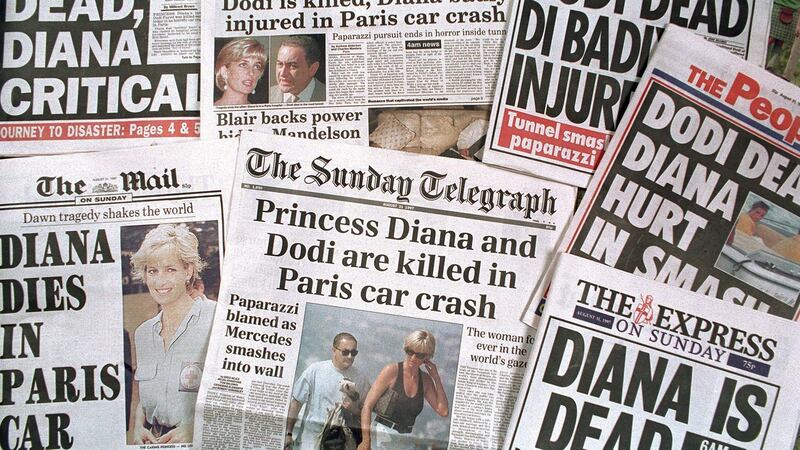
Throw al-Fayed senior into the mix and there was something for everyone: a highly colourful character, married to the former wife of a global arms dealer and yearning for acceptance by a disdainful British establishment.
So following the glad, confident morning of Tony Blair’s New Labour landslide in May, the tabloids gleefully chased the story of that 1997 summer: Di in the Med, a fabulous Eurotrash soap opera that sent newspaper circulation into the stratosphere and built mansions for dead-eyed paparazzi; some of it at least, with Diana’s co-operation.
The photographs had not been taken with a long-range camera, the press argued when accused of intrusiveness. So who was playing whom?
Hours before the crash, another set of "exclusive" photographs had received the splash treatment. Di and her "Romeo" in the yacht moored off the Italian coast at Portofino, her efforts to climb on to a jet-ski prompting "Di's legover"-style headlines. She "relaxed with her legs draped over the back of the sofa", said the Sun, "gazing at the 42-year-old playboy, the couple separated only by the silver champagne bucket between them". The photographs had not been taken with a long-range camera, the press argued when accused of intrusiveness. So who was playing whom?
Privilege and self-indulgence
Despite the work for Aids and landmines, Diana was no icon of mine, I wrote at the time. She was an exasperating woman who achieved fame only through the man she married and became more celebrated for her clothes, bulimia, suicide attempts, exotic holidays, media manipulation, psychic consultations and colonic irrigations than anything else. I had no hunger for information about her, never devoured the magazines nor Andrew Morton’s Diana blockbusters. I could never understand how other ordinary women could identify with her (as many claimed to), given her alien world of extraordinary privilege and shameless self-indulgence.
And yet somehow, we had evolved to a point where news of her death could shock me to tears. For 16 years, she had infiltrated our lives almost by osmosis, when all she and I had vaguely in common was that we had married within a year of each other and had children of similar ages.
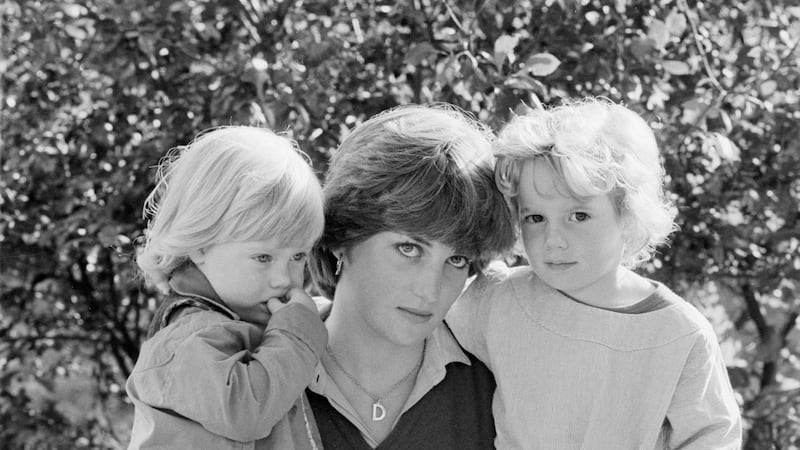
So perhaps it was the images of Diana as vibrant mother of two happy sons that hit a nerve. Diana laughing uproariously with them on a roller coaster; swooping down, arms outstretched to sweep them into her arms after a foreign tour of duty; winning the Mothers’ Race at a school open day. The kind of royal images undreamt of before Diana. Yes, the lump in the throat was probably for the boys. Who, we wondered, would replace her?
But it was also difficult not to be stirred by the memory of those first pictures of the shy, naive, gawky young childminder, unwittingly posing with the sun outlining her legs through a long skirt. Or not to wince at the reptilian smirks of her father and uncle, confirming publicly that she was indeed a “bona fide virgin”. Rumour had it that her maidenhead was verified by the court gynaecologist at the time of her engagement.
She had been a pawn in a vicious divorce struggle and was a naive, Mills & Boon-addicted, 19-year-old virgin, when she fell in love with her prince
She had been a pawn in a vicious divorce struggle and was a naive, Mills & Boon-addicted, 19-year-old virgin, when she fell in love with her prince, a man who when asked at their engagement announcement if he was in love, had hesitated, then answered “Whatever ‘in love’ means . . .”. She had met him 13 times before they married and years later told an interviewer that after she had answered that, yes, she was in love, “like the fat Sloane Ranger that I was”, she had been “absolutely traumatised” by his response.
When she had a wobbly before the wedding day, her sister told her she had to go through with it because her face was already on the tea towels. And so, with the gradual discovery that Charles had married her while in love with somebody else and there would always be “the third person in the marriage”, began the plunge into cry-for-help suicide attempts, eating disorders and affairs, the ill-judged cultivation and attempted manipulation of treacherous journalists rather than influential friends who could weigh in against Charles’s narcissism, his schemers and toadies. If people sneered at Diana’s longing to be the Queen of Hearts, there was a pair of them in it. “My entire life has been so far motivated by a desire to heal,” he once said. “To heal the dismembered landscape and the poisoned soul.”
And it seems that Diana – who based her power on a "three-way marriage of commerce, society and philanthropy" which, according to journalist Tina Brown, was a corporate phenomenon that in London of the 1990s was "new and directly Diana-related" – was not the only arch media manipulator. A former Sun editor claimed to have been briefed about once a week by Camilla about the Charles/Diana relationship, between 1982 and 1992.
Three in the marriage
The monarchy was in a dangerous place. Only two years before, Diana had given her notorious Panorama interview, alleging there were "three in the marriage" from the outset and that she felt herself treated as "a basket case" by a cold, unfeeling, malevolent royal "firm". A Sunday Times survey showed that three-quarters believed the queen was out of touch and more than half thought she should step down immediately, or when she turned 75.
This was the context that Sunday morning when news erupted of Diana’s death, and the new, cool prime minister, Tony Blair, chokingly dubbed her The People’s Princess.
It was not only the British who collapsed in a heap
It was not only the British who collapsed in a heap. A week later, President Bill Clinton watched the funeral in tears. There was a huge service in Washington Cathedral. At Washington’s Gospel Mission, at what was called a “black tribute”, Diana was praised for focusing on problems such as Aids, homelessness and poverty. In San Francisco, her work for Aids victims was remembered in a 14,000-strong march. In Los Angeles, Aids activists turned a baseball field into a candlelit shrine. In Germany, more than 20 million people watched the funeral live. The then German chancellor, Helmut Kohl, commented that Diana had become the victim of an unceasing, gross and unscrupulous circulation battle in a section of the media.
Irish homes
It was no different in Ireland, a place Diana had never visited. Her televised marriage to Charles in 1981, which took place against the background of hunger strikes in Northern Ireland, had caused an 8 per cent surge in the national electricity grid here and so, on that August Sunday, it was hardly surprising that curtains remained drawn in many Irish homes as people huddled in front of televisions. One tearful interviewee told me that day that “this was exactly” how she felt when she heard of Veronica Guerin’s death.
Over the following week, the State rowed in with the public mood. On the day of her funeral, Tricolours flew at half-mast on all State buildings. An ecumenical service at St Patrick’s Cathedral was attended by 3,000 people, including former president Mary Robinson, the taoiseach, the chief justice, the British ambassador, and the archbishop of Dublin. Even Sinn Féin expressed its sympathy. U2 ended the Dublin leg of their world tour with Bono turning to the giant screen lit up with Diana’s face and singing the lines, “Sleep, sleep tonight . . .” from a song written originally as a tribute to Martin Luther King. A party in O’Connell Street to celebrate Mary Robinson’s presidency was cancelled as a mark of respect.
Most bizarrely, the Irish soccer team, including Roy Keane and Shay Given, donned black armbands for a World Cup qualifier played on the day of the funeral.
Most bizarrely, the Irish soccer team, including Roy Keane and Shay Given, donned black armbands for a World Cup qualifier played on the day of the funeral. The manager, Mick McCarthy, said the players were all in agreement, since most of them were earning their living in the UK: "And Princess Diana wasn't just a British celebrity – she belonged to the world."
Meanwhile, in Britain, the royals left the curtains drawn and chose to remain silent and aloof, failing to understand that the royal subjects – streaming into London at the rate of 6,000 an hour in an astonishing display of diversity and inclusion – empowered by their New Labour landslide, had run out of deference. Crowds bayed for them to show themselves. It left Charles in an impossible position – lambasted as a hypocrite for being the one to collect her body in Paris, resented even for joining the funeral procession as a chief mourner, damned if he did and damned if he didn’t, a dilemma that must have found many an echo in ordinary households. Charles Spencer, Diana’s brother, told tabloid editors to stay away from the funeral. In France, photographers were being pulled in for questioning.
Her funeral took place under a cloudless sky. You didn't have to be a monarchist or Hello!-addict or a media-driven hysteric to be moved by the wreath of roses spelling out "Mummy" across her coffin, followed by her two young boys on foot. Her brother has since said he was lied to when told that the boys had asked to walk behind the coffin.
In an atmosphere charged with a kind of revolutionary spirit, 500 representatives of Diana's disparate charities strolled behind in casual dress and ragged lines and unprecedentedly the royals left their palace to stand outside the gates. A flag rose above Buckingham Palace. Beside me, a woman burst into a frenzied "Ave Maria, plena de grazia . . .", an old man saluted and a girl blew rose petals. Later in Hyde Park, in front of giant screens, the massive crowd wept and parsed every word of the service, particularly those of Charles Spencer's eulogy. His point-scoring against the royals, senior courtiers and the media created successive Mexican waves of spontaneous applause that broke through the old walls of Westminster Abbey and must have chilled the bones of the establishment for a brief spell.
When he declared that his sister – who had been stripped of "her royal highness" status – "needed no royal title to generate her particular magic", and used phrases such as "we, your blood family", the applause felt like the storming of the Winter Palace. When Elton John ran his fingers across the opening chords of his reworked song, Candle in the Wind, candles flickered and grown men sobbed.
It was a kind of madness. What did it all mean ? A temporary mass hysteria?
It was a kind of madness. What did it all mean ? A temporary mass hysteria? A public display of emotion or a carnival of sentiment ? To this observer, Hyde Park felt like one vast confessional.
I asked a tear-stained young woman what was going on in her head. “I have no idea, none at all. I don’t even know why I came. I’m a bit embarrassed about it . . . All I can say is that it was the impulse I get to go to my mother’s grave . . .” Her friend blew her nose and answered: “Guilt, maybe. I sneered a bit when she was alive. Now I don’t know why I did that.” After a pause, she brightened: “You know, I feel so peaceful now. Incredibly drained but incredibly peaceful. Maybe what we all needed was one really good cry, a huge emotional release. If that’s catharsis, then I’m for it.”
Flawed woman
Most who were in London that week would say something similar. Nobody believed Diana to be the Immaculate Conception; they were wise to her frailties and her willingness to talk about them was what made her “normal”. They grieved for a flawed woman who had done some good. They had sent a clear political message which had brought the archaic monarchy to the edge of a constitutional crisis. But, more than that, they had given themselves that rare permission to drop their guard and grieve openly for themselves and buried sorrows.
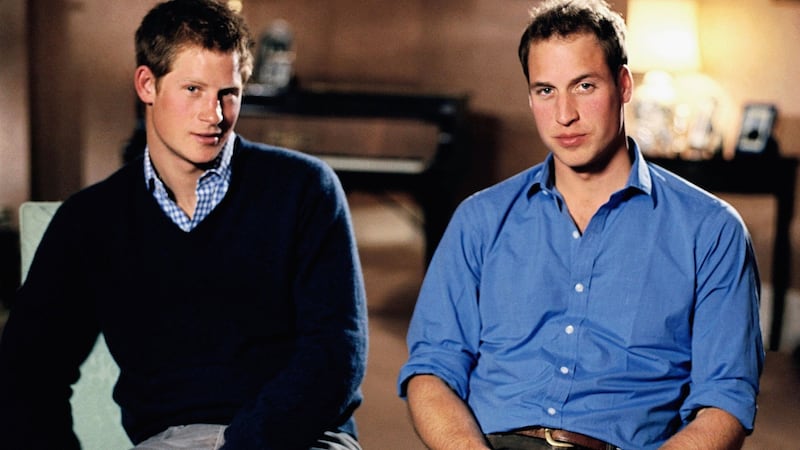
This, at least, has had a lasting effect. Prince Charles’s sons now talk openly about their mental health issues and the loss of their mother with celebrities such as Lady Gaga, reaching out through social media to reach a more youthful audience and reinventing the concept of monarchy for the digital age. They feel free to marry untitled, non-virginal grown-ups and to lash out at the intrusive media in long public statements. The “firm” has travelled a long way in 20 years. Despite Bagehot’s famous warning, it has let in daylight upon magic – a lot of it. Diana would be proud.











